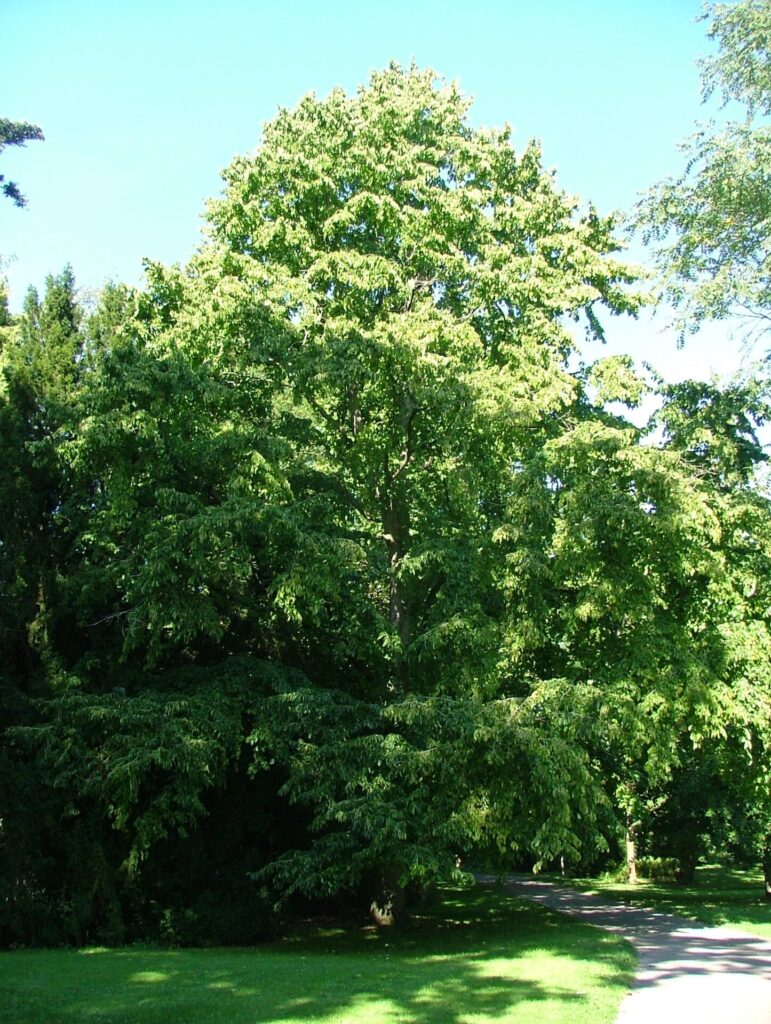Keeping your hazel tree watered is important to ensure profuse
flower and nut production. It will not tolerate drought and will need supplemental watering to remain a
viable producer if you look forward to it fruiting during dry periods. Water it using the same standard
rule to establish 10 gallons per inch of trunk diameter after planting. Using this method will keep your
hazel green and blossoming in even the driest of weather.
While the mature trees are drought tolerant, young shrubs need constant moisture and should never
be allowed to fully dry out. Water each week during the growing season until they are well
established,taking special care to water deeply during dry weather. Aim for about an inch of water
every 10 days or so for the first two seasons after planting.
Hazelnuts are delicious! If you don’t want to share your nuts with forest
friends, keep an eye out for critters large and small that may want in on your crop. Deer and rabbits
both enjoy munching on the leaves, branches, and catkins. And squirrels, of
course, love to eat the nuts. While it isn’t easy to keep them off your trees, it is a good idea to be
vigilant and try to pick the nuts before the squirrels do!
Wire cages can also be very useful to protect young trees from hungry herbivores. Plastic netting,
irritants or similar protective devices could be used to prevent damage the first five years.
There are a number of insects that also enjoy eating hazelnuts. Keep your eye out for these common
pests to reduce damage to your crop:
1) Filbert worm (aka Acorn moth) – small reddish brown moths with a thin brown band running across
the wings, and the larvae are about ½ inch in length with a dark brown head and a beige to pink body.
The larvae overwinter in the soil, emerging as moths in spring and laying
eggs on hazelnut husks. The young larvae that emerge then enter and feed on the developing nuts,
tunneling their way through and completely destroying the kernels. The nuts may also become infected
by secondary bacterial or fungal pathogens. Predatory insects such as parasitic wasps will eat the
larvae happily.
Try incorporating lots of flowering perennials like dill, daisies, and marigolds to encourage the
presence of beneficial insects to reduce pests. (Large-scale growers often use mating disruption
pheromones to reduce the population of acorn moths in their orchards).
2) Nut weevils- this beetle is characterized by its elongated snout and ranges from about 1/4 to 1/2
inch in size and munches on buds and leaves in the spring, damaging foliage, and lay their eggs in the
developing nuts in early summer. The larvae emerge in late summer to
feed on the nuts, creating holes in the shells. The infected nuts do not drop, and often end up being
harvested along with the healthy remainder of the crop, at best creating a nuisance for harvesting, and
at worst effectively ruining the crop.
One way to remove weevils naturally is to place tarps under the trees during the late summer after a
rainstorm, and shake each tree until the adult weevils fall to the ground. They will remain still for a few
minutes after falling, at which point they can be collected in a bucket of soapy water and disposed of,
or collected to be fed to your chickens.
You can continue to repeat this method until early fall.
The diseases that tend to plague filberts are those that thrive in wet soils. You can do a lot to mitigate
disease risk by planting your trees in places that are not waterlogged, with well-draining soil.
Eastern Filbert blight- the fungus causes cankers to form on branches and blossoms, leading to rapid
wilting and dieback of foliage and branches. This is a serious issue for the European species, C.
avellana, in particular. Cankers appear as dark, raised lumps on infected plant
tissue. Remove and dispose of branches with cankers.
Armillaria root rot (aka oak root fungus)- leaves infected with this fungus will become discolored and
drop, followed by branch die-off and the eventual death of the entire plant. Yellow mushrooms may
also appear at the base of the plant. Once this disease takes hold, plants need to be removed and disposed of.
The best way to prevent armillaria is to plant resistant rootstock. This bacterial disease causes damage to young branches, as well as the death of buds and
leaves.
Bacterial canker- is a particular problem in European hazelnuts. New growth withers, and buds and
leaves die, remaining attached to the tree after healthy leaves drop in the fall. Cankers can also be
seen, appearing as gray areas on the bark. Cut out and dispose of infected
plant matter to prevent further spread.






